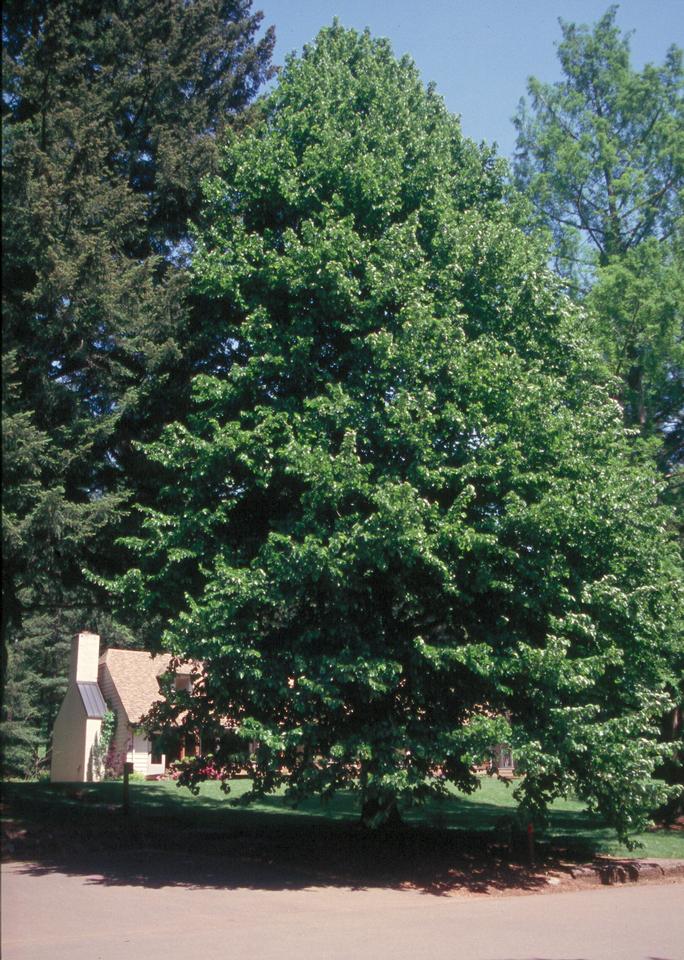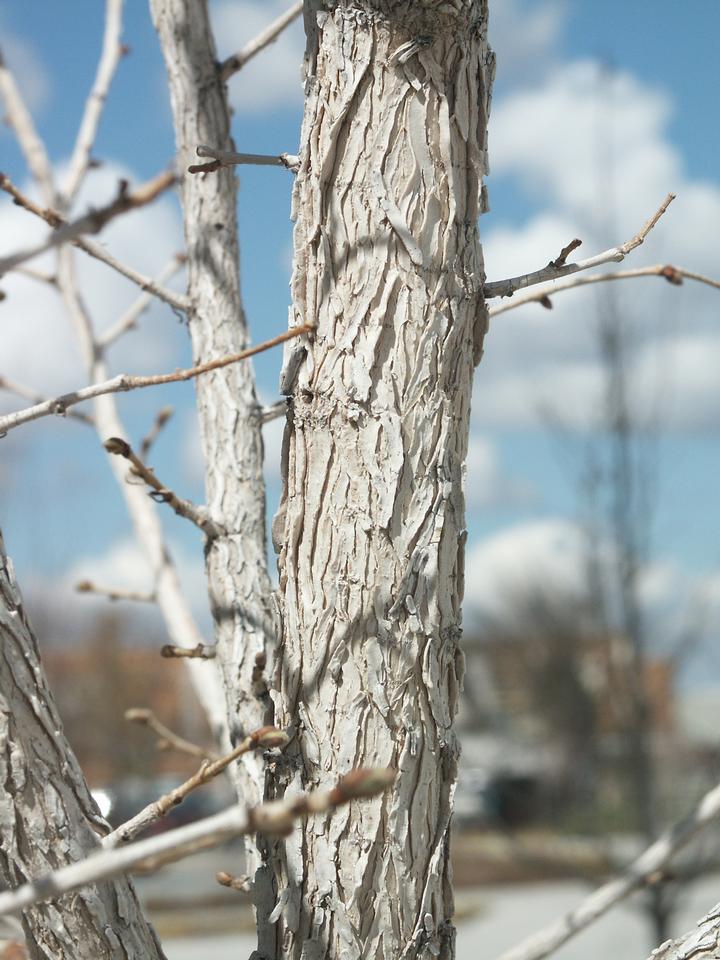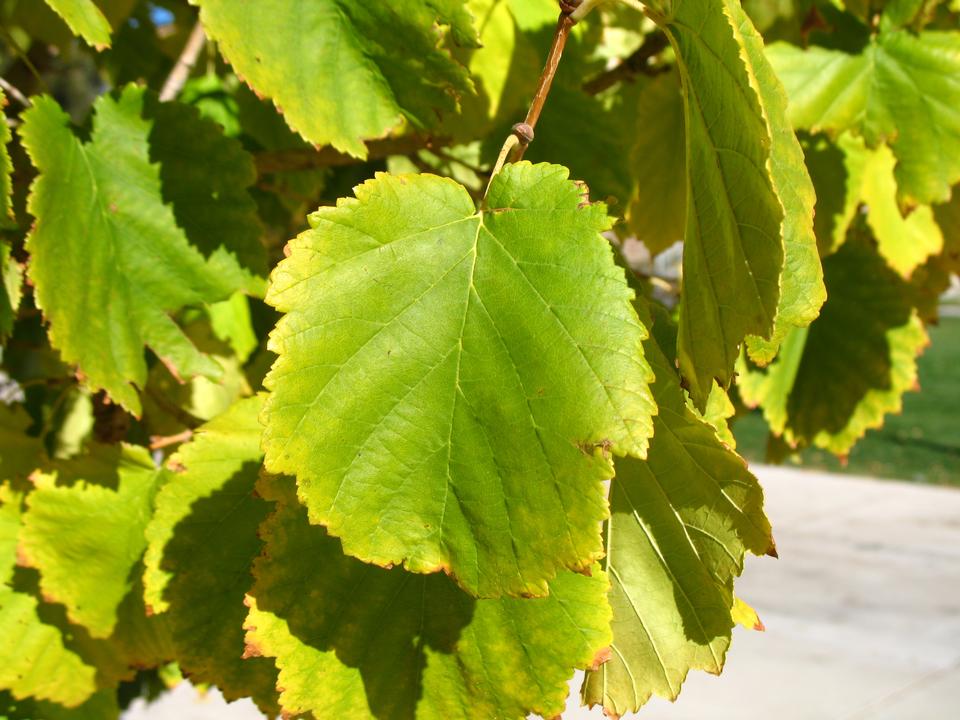Filbert, Turkish or Turkish Hazel
Corylus colurna
Betulaceae - Birch
Description
Leaves: Alternate; simple; wide and ovate to obovate; 2-1/2" to 6" long; deciduous; sharply, doubly serrate margin; rounded to heart-shaped base; acuminate apex; dark green and glabrous above; hairy on veins beneath; yellow to purple in fall but not effective; petiole 1/2" to 1" long.
Twigs/buds: Twigs pubescent and bumpy; grayish-brown; with small cracks developing with age down the length of the stem. No terminal bud; lateral buds 1/3" long, rounded, downy scales, green-brown.
Flowers/fruit: Monoecious. Fruit an edible nut, 1/2" to 5/8" diameter, attached to a large, leafy brac.t
Bark: Light brown; flaky; orange-brown inner bark exposed as scales fall off.
Wood: Unimportant; little used. Diffuse-porous.
General: Native to southeast Europe and western Asia. Medium growth rate, medium-sized tree. Tolerates a wide variety of conditions including high soil pH, and moderate drought, and fairly cold temperatures. Shade intolerant.
Landscape Use: Another very good tree that is not planted enough and will be difficult to find. Zones 4-8. Other, shrubby hazels with edible nuts worth trying in Utah are American hazelnut (Corylus americana) and beaked hazelnut (Corylus cornuta and C. cornuta var. californica).
Cultivars: 'Obelisk'.
Characteristics
General
| Family | Betulaceae - Birch |
|---|---|
| Cultivar Availability | No |
| Hardiness Zone | 4-8 |
| Type | Broadleaf |
| Utah Native | No |
Growth
| Growth Rate | Medium |
|---|---|
| Mature Height | Medium |
| Longevity | High |
| Is Good Under Power Lines | No |
| Crown Shapes | Pyramidal |
Ornamental
| Bark | Yes |
|---|---|
| Fall Color | No |
| Flowers | No |
| Foliage | Yes |
| Fruit | No |
Tolerance
| Shade | Low |
|---|---|
| Salt | Low |
| Drought | Medium |
| Poor Drainage | Medium |
| Alkalinity | High |
| Transplanting | Medium |








